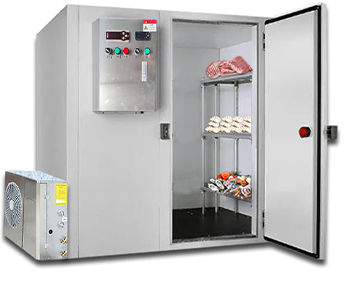Designing Efficient Cold Storage Solutions for Laboratory Applications
The Importance of Cold Rooms in Laboratories
In scientific research and experimentation, maintaining the integrity of samples and experiments is paramount. This is where cold rooms, or refrigerated laboratories, come into play. Cold rooms provide a controlled environment that is essential for a wide range of applications, from biological research to chemical experiments. In this article, we will explore the significance, features, and applications of cold rooms in laboratories.
What is a Cold Room?
A cold room is a temperature-regulated room designed to store sensitive materials under controlled conditions. Typically, the temperature in a cold room ranges from 2°C to 8°C, depending on the specific requirements of the samples being stored. These facilities are equipped with advanced refrigeration systems, humidity controls, and monitoring devices to ensure that the environment remains stable and reliable.
Importance of Cold Rooms
1. Preservation of Biological Samples One of the primary uses of cold rooms is the preservation of biological samples, such as tissues, blood, and cell cultures. Many biological entities are highly sensitive to temperature fluctuations; even a slight increase in temperature can degrade their quality. Cold rooms help in preserving their viability for longer durations, allowing researchers to conduct more accurate and extensive analyses.
2. Chemical Stability Certain chemicals and reagents require specific temperature conditions to maintain their stability and effectiveness. Cold rooms ensure that these substances remain stable, reducing the risk of unwanted reactions that could compromise experimental results. The ability to control the environment prevents the degradation of chemicals and ensures reproducibility in experimental procedures.
3. Enhanced Research Capabilities The use of cold rooms allows researchers to conduct experiments that would otherwise be impossible or highly compromised at room temperature. For example, biochemical reactions that are sensitive to temperature changes can be carefully controlled, providing more reliable and reproducible data.
4. Regulatory Compliance In many fields, particularly in pharmaceuticals and biotechnology, maintaining specific storage conditions for certain materials is not just a best practice; it is a regulatory requirement. Cold rooms facilitate compliance with these regulations, ensuring that laboratories can meet industry standards and avoid legal repercussions.
Features of Cold Rooms
cold room in laboratory

Cold rooms are equipped with various features aimed at maintaining optimal storage conditions. These include
- Advanced Refrigeration Systems These systems are designed not only to cool but also to maintain steady temperatures without fluctuations. - Temperature and Humidity Monitoring Most cold rooms are equipped with digital monitoring systems that provide real-time data on temperature and humidity levels. This information is critical for ensuring that conditions remain within specified ranges.
- Alarm Systems In the event of a temperature excursion, alarm systems alert laboratory personnel, allowing for immediate corrective action to prevent sample degradation
.- Accessibility and Space Management Cold rooms are designed for ease of access, often incorporating shelving and storage solutions to maximize space while keeping samples organized.
Applications of Cold Rooms
The applications of cold rooms are vast and varied. They are used in many fields, including
- Biotechnology and Pharmaceuticals For the storage of vaccines, enzymes, and other biologically active compounds. - Clinical Laboratories For the preservation of blood samples, tissue samples, and other diagnostic materials.
- Food Science In food safety and microbiology labs, cold rooms are used to store perishable samples and conduct temperature-sensitive experiments.
- Environmental Science Cold rooms are used to preserve samples for ecological studies, including animal and plant specimens.
In conclusion, cold rooms are an integral part of laboratory operations across multiple disciplines. They play a crucial role in preserving the quality of sensitive materials, ensuring compliance with regulations, and enhancing research capabilities. As science progresses, the importance of maintaining controlled environments will only continue to grow, making cold rooms indispensable assets in laboratories worldwide.
















































































































